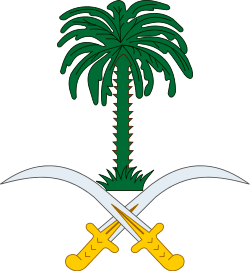1990 Mecca tunnel tragedy
| Date | 2 July 1990 |
|---|---|
| Location | Mina, Mecca, Saudi Arabia |
| Deaths | 1,426 |
On 2 July 1990, an incident occurred during the Hajj in which 1,426 people were suffocated and trampled to death in a tunnel near Mecca.[1] Until the 2015 Mina stampede, this incident had the highest death toll of any Hajj tragedy in modern times.[2]
Event
The incident occurred inside a 600-yard-long and 35-foot-wide pedestrian tunnel (Al-Ma'aisim tunnel) leading out from Mecca towards Mina and the Plains of Arafat. The tunnel had been worked on as part of a $15 billion project around Mecca's holy sites started two years earlier by the Saudi government.[3]
While pilgrims were traveling to perform the Stoning of the Devil ritual at 10am that morning,[4] the disaster started when a pedestrian bridge railing was bent, causing seven people to fall off a bridge and onto people exiting the tunnel.[5] The tunnel's capacity of 1,000 soon filled with up to 5,000 people.[6] With outside temperatures of 44 °C / 112 °F degrees, a failure of the tunnel's ventilation system was also blamed for many of the deaths.[7] Some witnesses claimed they believed a demonstration was occurring, others reported that the power to the tunnel was cut.[8] Saudi officials concluded that crowd hysteria occurring from the falling pilgrims was the cause.[9]
Many who died were of Malaysian,[10] Indonesian and Pakistani origin.[11][12][13] According to one Malaysian account, 80 percent of the deaths occurred outside the tunnel, and 20 percent (about 285) were inside.[14]
Reactions
Immediately after the event King Fahd stated that the event was "God's will, which is above everything", adding that "had they not died there, they would have died elsewhere and at the same predestined moment."[15] About 680 of those who died were Indonesians, and Indonesian officials criticized the Saudi government, saying it "cannot run from the responsibility for the tunnel disaster simply saying it was an act of God."[16] Iran also expressed concerns after the incident,[17] though not to the same level of their strong protests after a 1987 incident that led to the death of 400 Shia pilgrims, presumably because Iran was not a victim of the incident. Turkey also issued a brief complaint after the incident. Calls for an international investigation were rejected by the Saudis.[9][16]
See also
References
- ↑ (24 Sep 2015). More than 700 pilgrims die in crush in worst haj disaster for 25 years, Reuters
- ↑ (13 Jan 2006). A history of hajj tragedies, The Guardian
- ↑ (5 July 1990). Pilgrimage Ends; Iran rips Saudis, Eugene Register-Guard (Associated Press)
- ↑ (16 July 1990). Saudi Arabia A Tragic Ascension to Paradise, Time (magazine) (subscription required)
- ↑ (4 July 1990). Witnesses describe stampede that killed 1,400 pilgrims in Mecca, Bangor Daily News (Associated Press)
- ↑ Mahmoud, Aly (5 July 1990). `Stoning The Devil' Began Mecca's Tunnel Tragedy, Seattle Times (Associated Press)
- ↑ (6 July 1990). Horror revisted, Gainesville Sun
- ↑ (10 July 1990). FILIPINO PILGRIMS AMONG VICTIMS OF MECCA TUNNEL TRAGEDY, UCA News
- 1 2 Middle East Contemporary Survey: 1990, Volume 14; Volume 1990, p. 190
- ↑ (19 July 1990). Saudis yet to accept our offer of experts, New Straits Times (93 Malaysians confirmed dead by 19 July 1990. Final number grew)
- ↑ "True Islam". Quran-Islam.org. Retrieved 2013-07-31.
- ↑ "A history of hajj tragedies | World news". London: theguardian.com. January 13, 2006. Retrieved 2013-07-31.
- ↑ (3 July 1990). 1,000 Muslims Reportedly Killed In Stampede at Mecca Pilgrimage, The New York Times (Associated Press)
- ↑ (18 July 1990). Tunnel tragedy death toll may reach 155, says Yusof, New Straits Times
- ↑ (3 July 1990). Stampede kill 1,400, Rome News-Tribune
- 1 2 Ibrahim, Youssef M. (19 July 1990). Saudis Criticized Over Mecca Tunnel Disaster, The New York Times
- ↑ (15 July 1990). Iran says Saudis killed pilgrims, Reading Eagle (Reuters)
